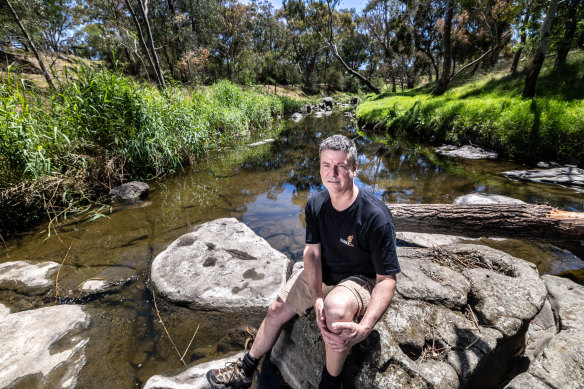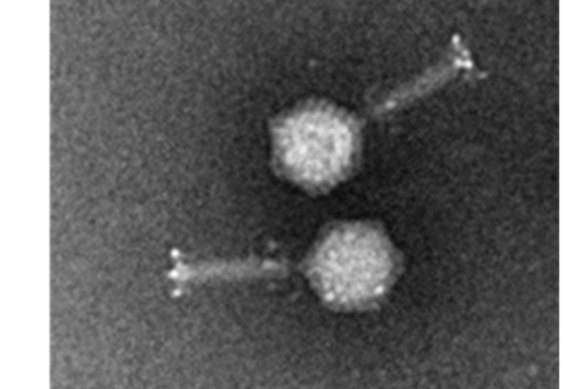This was published 7 months ago
Virus lurking in Merri Creek is a slick superbug killer that could save millions
By Bianca Hall
Deep in the Merri Creek, which twists 70 kilometres through Melbourne’s northern suburbs, lurks a deadly virus.
But this virus – a bacteriophage, which preys on bacteria and replicates within – has the potential to eventually save millions of human lives.

Professor Trevor Lithgow and his team discovered a previously unknown virus in the Merri Creek.Credit: Jason South
Researchers from Monash University, working in partnership with the Wurundjeri Woi Wurrung Cultural Heritage Aboriginal Corporation, have discovered in Merri Creek water a previously unknown bacteriophage, which kills a common superbug found in hospitals worldwide.
That superbug, Klebsiella, is increasingly resistant to antibiotics and can cause pneumonia, wound infections and even meningitis in patients it infects.
Professor Trevor Lithgow, the lead on the Monash University research team, said bacteriophage – informally known as phages – only infect bacteria, and most only target one form of bacteria.
Researchers took a water sample from the creek in Coburg North and tested it to establish whether there was phage in the creek.

An electron microscopy of the “dangerous Merri lurker”, which can kill the hospital bug Klebsiella.Credit: Trevor Lithgow
“The Klebsiella we were using as the bait to try to find a phage is one that’s isolated from patients at The Alfred hospital,” Lithgow said.
“So we know that there are people in Melbourne that have this bacteria, this Klebsiella, and those people are in the hospital because they’re suffering with that bacterial infection.”
Researchers considered finding a phage that targets Klebsiella a “high-value target”, Lithgow said.
“Normally, the people who would do the phage hunting for The Alfred would go to The Alfred hospital’s wastewater tanks, and they would try and fish the phage from there, which is a dirty, filthy procedure, and you have to be covered like a CSI investigator in order to get amongst it and not get sick,” Lithgow said.
‘We knew there were some interesting things in the Merri Creek, but we didn’t expect this.’
Julian Rait, Australian Medical Association
However, the phages always found in hospitals were good – but not great – at killing Klebsiella.
Lithgow and his team took a different approach.
“[We asked], would there be more diversity if we went, as it were, into the wild to try and find phage that would kill this hospital-type Klebsiella,” he said.
Wurundjeri elders named the Klebsiella-killing bacteriophage Merri-merri-uth nyilam marra-natj (MMNM), which translates as “dangerous Merri lurker” in English.
Phages were first used as treatment more than a century ago, but the emergence of antibiotics meant phage therapy was all but abandoned in much of the world. The rise of antibiotic-resistant superbugs has, however, prompted renewed interest in phage therapy.
Australian Medical Association vice president Julian Rait said the team’s research was exciting. “We knew there were some interesting things in the Merri Creek, but we didn’t expect this,” he said.
“It’s almost like we’re back to the future with this examination of phage activity directed against a broader spectrum of bacteria than we might have first thought of.”
According to research published in The Lancet in September, antibiotic resistant infections could kill 1.91 million people annually by the middle of the century.
Start the day with a summary of the day’s most important and interesting stories, analysis and insights. Sign up for our Morning Edition newsletter.